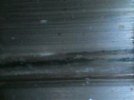nicholasjohn
Well-Known Member
Conceptually it does have A problem. Practically it doesn't seem to matter enough to cripple it, maybe only wound it in the extreme outer fringes.
Holds hand up; have had case head separations in a belted case. From first fired Norma brass at that. Split right where Lowedown describes, thinned and then separated just above the belt. Was an 03-A3 action in .308 Norma Mag that was gradually increasing it's head-space, owned by a nuuB who didn't understand what was happening but knew enough to know it was bad.
The original reason for the belt was to head-space in double rifles. It wasn't marketing that said "Hey, let's put a thicker part here on the case and we'll claim some dubious advantage."
The magazine writers were the ones who claimed the advantage. The standard-length cartridges that were based on the old H & H case had the belt, because there was no reason to remove it - it wasn't hurting anything. The ammunition manufacturers were already tooled up to make these cases, so they shortened the design to fit into 30-06 length actions, and necked them to accept bullets of the popular diameters at the time. ( What they were looking for was the increased case capacity over the 30-06 case, not the belt.) In those days, reloading wasn't as popular as it is today, so not too many people cared if the brass was only good for one firing.
Once more people started to reload these cartridges, guys figured out that they should size them in a manner that didn't push the shoulders back every time, and everybody who was "in the know" did just fine. Again, no real problem stemming from the belt that couldn't be dealt with. Guys who didn't know learned pretty quickly from the guys who did.
The problem, I think, came from magazine writers associating the belt on the case with the word "magnum," and they ginned up these perceived problems to have something to write about. Now they would look smarter to everybody who reads their work. This cooked up the need for more new stuff - like the "beltless magnum," which cured a problem that didn't exist. More rifle cartridges is not a bad thing for shooters,though, so I think this is just fine.
Another "problem" they have been working on is the short necks on the belted magnum cases. It gets a lot of ink, but the 300 WM's short neck doesn't seem to be negatively affecting its performance like some would have us believe. It seems to be long enough for even the fussiest accuracy nuts, but if somebody wants a longer neck, there are cartridges out there that have one. Suit yourself - it's a good excuse for a new rifle.
If I was going to start from scratch and buy ( or build ) a new rifle, I'd probably go belt-less - because it doesn't add any benefits that I can see. I've always been perfectly happy with the 30-06-based family of cartridges, but if I wanted more case capacity I'd go to a bigger cartridge that looks more like that design. Again, I see no advantage to either design concept.


